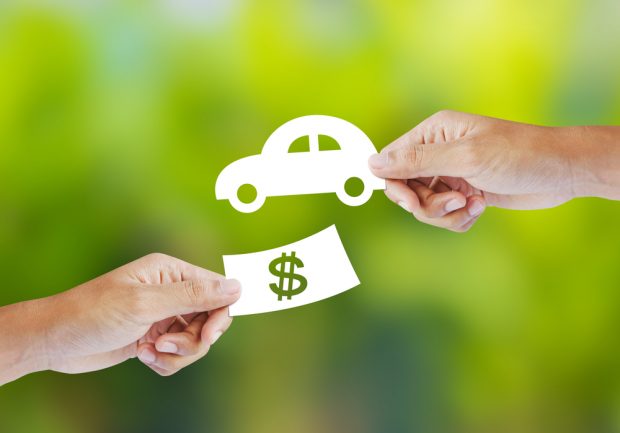 Source: Shutterstock.
Source: Shutterstock.
When Jenny Vipperman graduated from Virginia Tech in 2001 with a dual major in psychology and philosophy, she put it to work behind a desk at Enterprise Rent-a-Car.
Never underestimate a humanities major. She's now chief lending officer for VyStar Credit Union in Jacksonville, Fla. ($8.7 billion in assets, 667,325 members), trying to understand the minds of consumers and making them aware of the credit union's philosophy of helping members realize their dreams — and have the wheels to get there.
Recommended For You
One of the challenges faced by VyStar and other credit unions is figuring out where to draw the line on underwriting standards.
Like many credit unions, VyStar has begun studying alternative credit scoring methods as means of identifying more credit-worthy borrowers. It also uses a company that provides "decisioning" models and insurance against default on loans to near-prime borrowers.
Prime and super-prime borrowers accounted for about 59% of all new and used cars obtained by loan or lease as of June, according to Experian, an Irish credit reporting company. Non-prime –which Experian defines as scores from 601 to 660 – accounted for nearly 20% of the vehicles. Non-prime accounts for about 17% of new cars and about 22% of used.
On used cars, the average interest rate was 11.38% for non-prime borrowers in June, compared with 6.54% for prime (661 to 780) and 4.77% for super-prime (781 to 850).
While prime borrowers dominate auto loans at credit unions, the number with lower scores or no scores is considerable.
About 91.5 million U.S. adults have a thin or no credit record. About 20 million to 22 million are either subprime and might qualify as near-prime, or near-prime and might qualify as prime if alternate data were used to assess their credit risk, said Sanjoy Malik, founder and CEO of Urjanet of Atlanta, Ga., an aggregator of consumer payment data from more than 6,500 utility, telecom and cable providers in 47 countries.
"There is a substantial population within the U.S. for whom adding additional data to your credit file may improve your chances for financial inclusion," Malik said.
Vipperman has deep experience in the automotive sector and is learning more about buying deep. She worked for an Enterprise Rent-a-Car branch from 2002 to 2006 in northern Virginia, handling sales of cars coming out of the rental fleet. That work put her in touch with the chairman of Apple Federal Credit Union in Fairfax, Va. ($2.9 billion in assets, 213,865 members).
He told her Apple was looking for someone to help them start an indirect lending program who had both automotive experience and a "customer-centered" philosophy. She got the job.
"I was really impressed with credit unions in general, and Apple specifically," she said. "It was a perfect fit for me in my career."
She got her trade credentials – an MBA from George Mason University – in 2010. In 2014 she went on to be vice president of consumer lending at Tower Federal Credit Union of Laurel, Md. ($3.2 billion in assets, 190,192 members) for two years, and then another chief lending officer at Chartway Federal Credit Union of Virginia Beach, Va. ($2.2 billion in assets, 189,940 members) until she was hired as chief lending officer at VyStar in 2018.
VyStar's territory has recently expanded to central Florida, the panhandle and southeast Georgia. It is the largest auto and mortgage lender in northeast Florida and the 13th-largest in the nation with $2.2 billion in car loans on its books in June, up 9.5% from a year earlier.
About two-thirds of VyStar's auto loan portfolio is from indirect lending. "The neat thing about our indirect program is we do have such a long history and so many members in northeast Florida. About half of our indirect is existing members," Vipperman said.
About 70% of VyStar's loans are to prime borrowers, those with scores of 700 or more. The rest are predominately near-prime, with scores of 600 to 700.
VyStar offers a direct lending program called SmartWheels for members with subprime scores. It gives borrowers credit for trading in a car and having a checking account with direct deposit.
"They might not put cash down, but they're bringing their car to the table," she said.
For near-prime, it partners with OpenLending, a 19-year-old Austin, Texas company that specializes in that credit tier. It offers automotive loan analytics, risk-based pricing, risk modeling and automated decision technology. It also offers loan default insurance through third-party insurers.
The way Vipperman sees it, the additional risk is minimal to the credit union and those borrowers deserve the benefits. "They're getting a loan someplace, but they're just paying way too much for it."
Vipperman wondered how much benefit for the credit union or the borrowers would remain after the costs of insuring the loans against the loss, but the credit union is able to offer a better rate using the service. Without it, it would have less confidence and be forced to charge more.
"What they provide that's most important is the decisioning logic, being able to leverage millions of consumer data points to determine what the rate risk is" she said. "We don't have millions of members and all those data points."
The decisioning occurs in seconds, and changes the dynamic from a "We'll get back to you" answer to a quick "yes" or "no" – and now more often a "yes" than in the past.
"A lot of members realize they're going to get the loan denied, so they come in bracing for that," she said. "We can change that experience for them. That's very important."
VyStar estimates that this program can allow the credit union to lend to an additional 1,000 to 2,000 borrowers per year who would otherwise not qualify out of about 30,000 to 40,000 car loans produced annually now.
OpenLending is also a vendor for another large indirect lender: Canvas Credit Union of Lone Tree, Colo. ($2.6 billion in assets, 250,202 members).
The Denver-area credit union is among the 10 largest auto lenders in Colorado. Its new car loans were $495.5 million as of June 30, up 11.5% from a year earlier, while used car loans rose 8.2% to $1 billion.
Canvas executives said they believe Colorado will fare better than the rest of the country in a recession, but have become more conservative in the last 24 months and now expect the U.S. economy to slow down sometime next year.
One measure of that caution is its alliance with OpenLending that began about a year ago, which allows Canvas to reach out to more borrowers in the near-prime market with a limited risk to the credit union, Chad Shane, Canvas' SVP/chief lending officer, said.
"You could do it on your own and price them as you think you should, but without historical performance it's a bit more difficult," Shane said.
Aleks Bogoeski, CU Direct's vice president of strategic alliances, said credit unions generally shy away from non-prime and subprime borrowers for car loans. "The vast majority of them stay up higher in that prime credit segment."
Big banks invest millions of dollars on staffs of data analysts and scientists using complex tools to develop the confidence to lend to riskier borrowers. Many credit unions would like to do the same but lack the large data pools and resources to analyze them.
The Los Angeles, Calif.-area automotive lending CUSO is evaluating programs that might allow it to deepen its analysis of outside alternative data, or take a deeper look at existing data from within its client credit unions to find predictive data not now being employed.
Bogoeski, the father of a college student, offered that demographic as an example: Some alternative data models are attempting to look at college transcripts to predict future earnings and payment patterns on cell phones as an indicator of fiscal management.
"Most millennials and the younger generation value their phones over anything else," he said. "If they're not paying their phone bill, it might be indicative that they won't pay their car loan either."
VyStar is also monitoring the progress of alternative data. "Non-traditional data is something we're keeping a close eye on because potentially it could really help more consumers obtain credit," Vipperman said.
However, Vipperman expressed concern about the lack of regulation around the data. For example, credit bureaus are required to provide consumers means of correcting errors in their data. There are no such standards and mechanisms for alternative data.
Also, the FICO data has been around long enough for lenders to be familiar with the predictive strengths and weaknesses of certain types of data.
"We're excited about the opportunities it brings for the future, but we don't think the consumer protections are quite there yet," she said.
© Touchpoint Markets, All Rights Reserved. Request academic re-use from www.copyright.com. All other uses, submit a request to [email protected]. For more inforrmation visit Asset & Logo Licensing.







